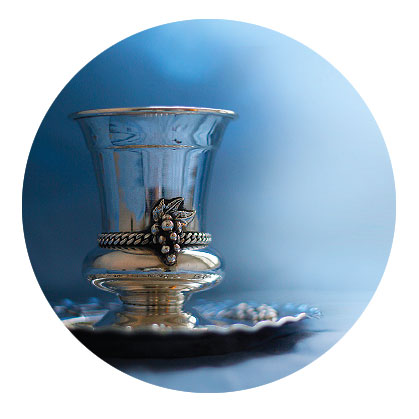Royal Robes


The Torah teaches us that there’s an alternative, more positive method of chinuch
“And Hashem to Moshe, “Speak to the Kohanim, the sons of Aharon, and say to them: None of you should become impure for a dead person….” (Vayikra 21:1)
Rashi comments on the redundancy in the words, “speak” and “say.” Why were both words used? The extra command, he explains, was directed to the minor children of Kohanim, to ensure they also avoid proximity to the dead.
Rav Yehuda Wagschal of Yeshivas Mir Yerushalayim notes that this is one of the primary examples of the Torah showing us how to educate our children. But this prohibition applies only to Kohanim; how does it teach us a general principle of chinuch? (Rav Ozer Alport, Parsha Potpourri)
Way back in the days when planes were still flying and people actually went visiting, I had a long stopover in England on my way to the States. Coincidentally, President Trump was also in England at the time, and so while seated on a back-numbing plastic bench for hours at my gate, the huge screen above me reviewed every aspect of the President’s stay in minute detail. Despite my disinterest, my boredom and the size of the screen led me to learn several salient facts I’d never have known otherwise.
Rav Wagschal suggests that this specific mitzvah teaches us the proper approach to educating children about negative commandments. Many people adopt the attitude that if Hashem proscribes a particular action, it must be reprehensible. They impress upon their children that if Torah says something’s forbidden, it is deplorable and must be avoided at all costs.
However, this technique cannot be used for a young Kohein. His parents cannot tell him that going to a funeral or cemetery is inherently repugnant — if it were, his non-Kohanim friends would not be permitted to do so.
Therefore, an adult Kohein must instead stress to his children how special they are due to their lofty status as Kohanim. Although proximity to the dead is not problematic for regular people, it does not befit descendants of Aharon who serve in the Beis Hamikdash.
One picture in particular intrigued me. A grand banquet had been planned and a family photo was shown of the Queen, Prince Charles and his wife, and Prince William and his wife. The color scheme was off-white, and the newscaster discussed ad nauseam each gown’s designer and cost.
What drew my interest though, was one jarring detail that stood out against an opulent background of perfection. The Queen, her husband, son, daughter-in-law, and grandson were all wearing across their outfits what looked like a blue pouch. (They reminded me of a Holly Hobby plastic purse I had in second grade.) What made matters worse, is that some wore them from left to right while others the opposite. And Kate Middleton was missing hers!
Personally, if I were planning a family photo and paying such prices for the gowns, I wouldn’t have messed up the overall effect with something so uncoordinated.
Sometimes, a parent can be mechanech their child by emphasizing the abhorrent nature of a particular sin. But there are many people for whom the message of “Don’t do that because it’s bad” doesn’t resonate. Therefore, the Torah teaches us that there’s an alternative, more positive method of chinuch — accentuating the greatness of every Jew.
We can teach our children to appreciate how fortunate they are to be part of an illustrious family with a mesorah that dates back for thousands of years. This will show them to intuitively recognize that certain actions are beneath them. We must build them up positively by emphasizing each child’s inherent good, both as an individual and as a vital component of the Jewish Nation. When children appreciate how special they are, they’ll naturally want to refrain from transgressing the Torah’s commandments.
The image kept niggling me, so I when I got home I researched the blue pouches. Lo and behold, they are pouches of honor! These sashes hold the “order,” the coat of arms of the bearer’s royal lineage for generations. The direction in which the sash is worn indicates the wearer’s status. Poor Kate, who isn’t royalty, couldn’t wear the unsightly blue pouch even if she wanted to.
I couldn’t resist. I printed the Wikipedia article and sent it my daughters.
Caption: When you’re royalty, you dress the part, no matter how it looks.
(Originally featured in Family First, Issue 691)
Oops! We could not locate your form.

